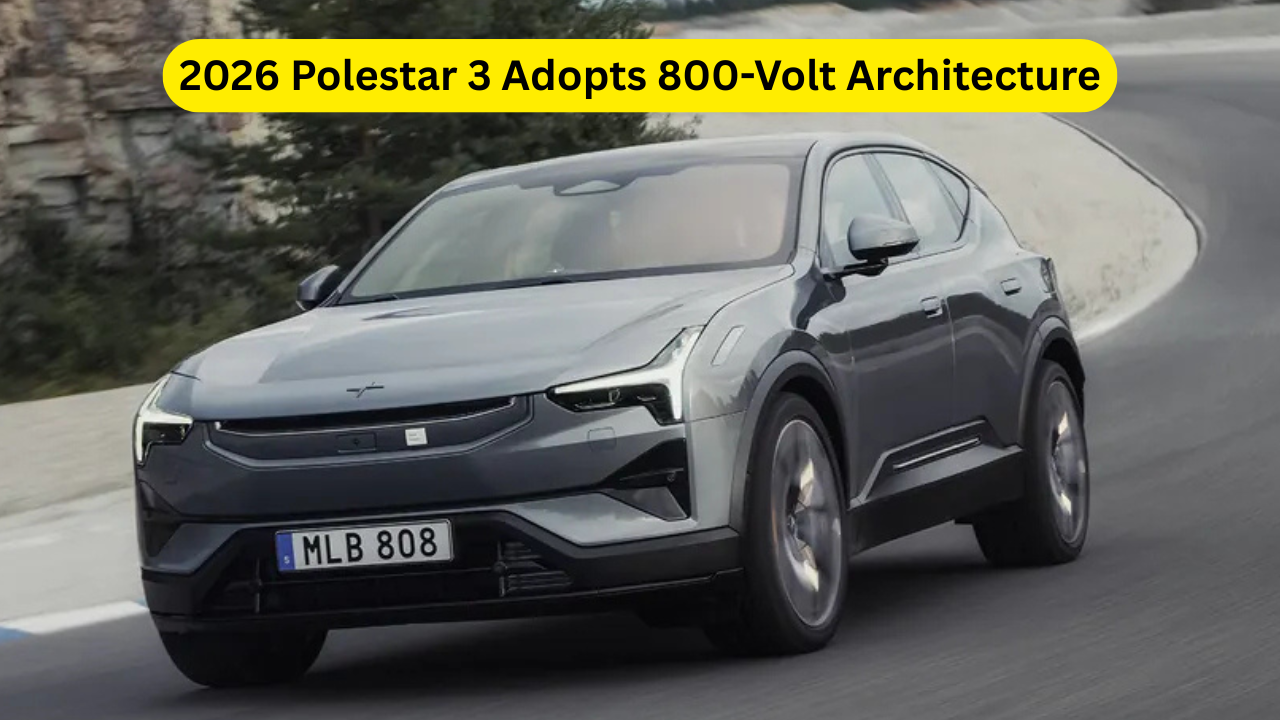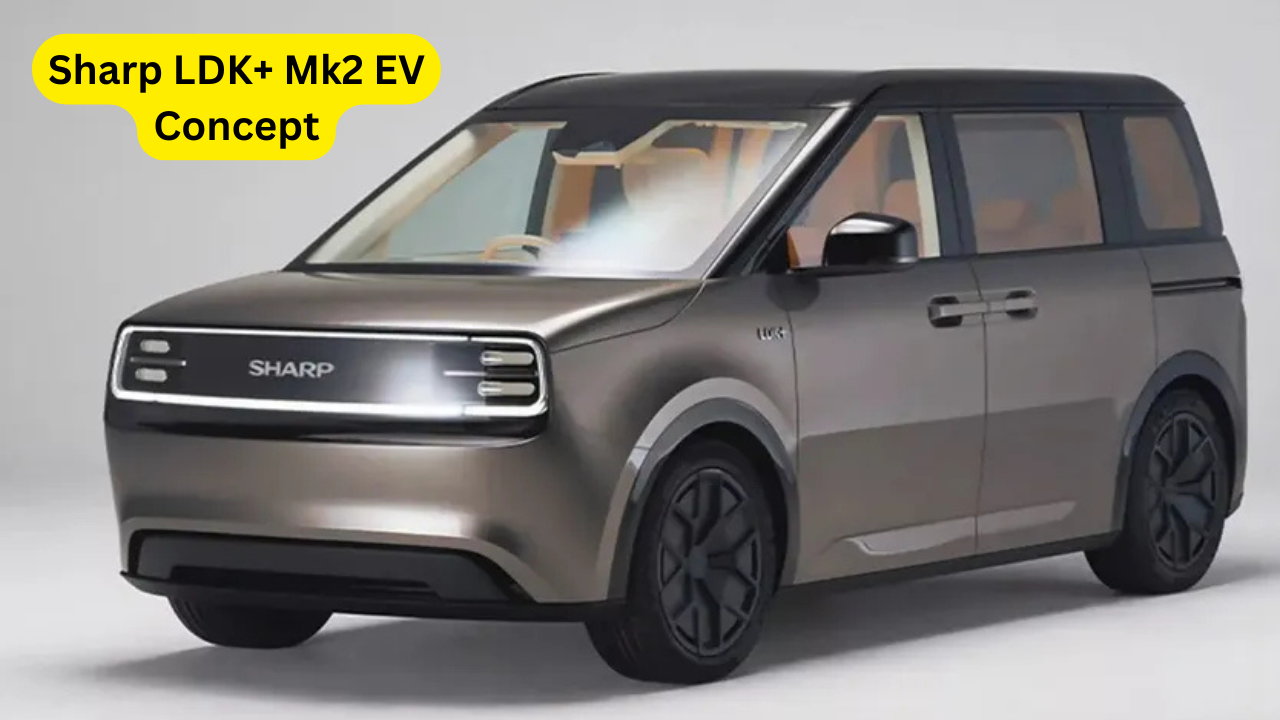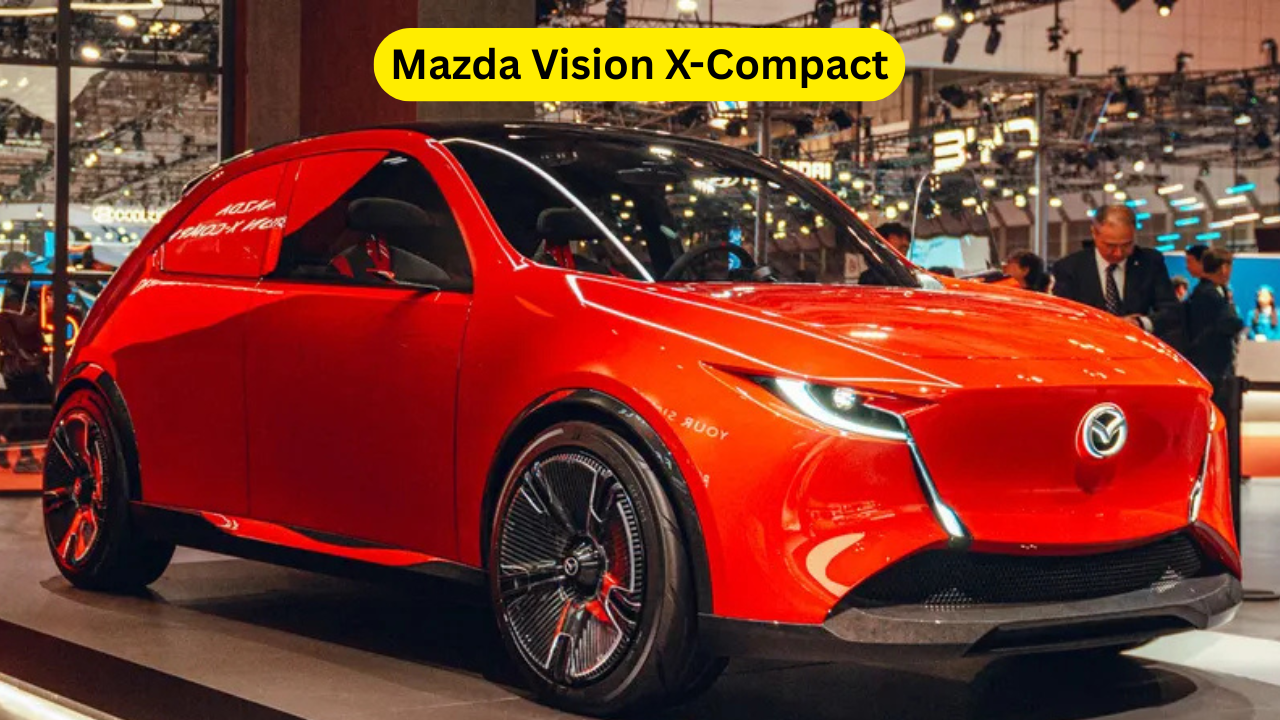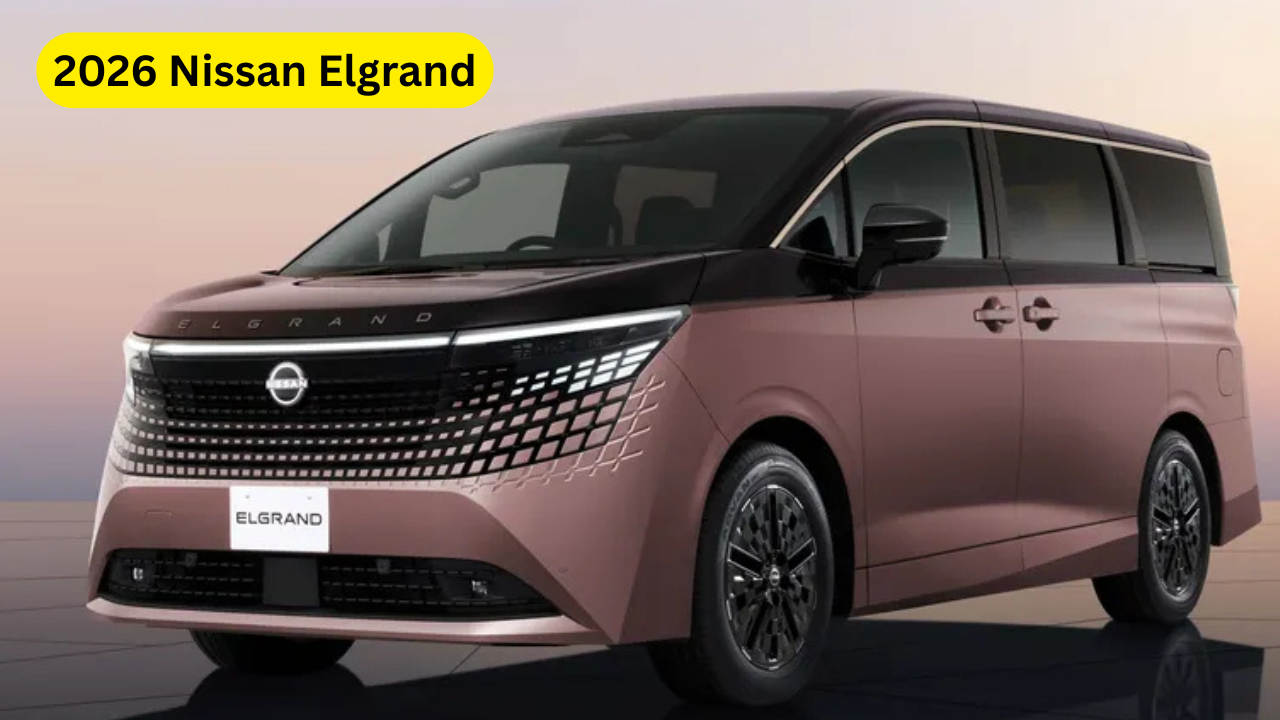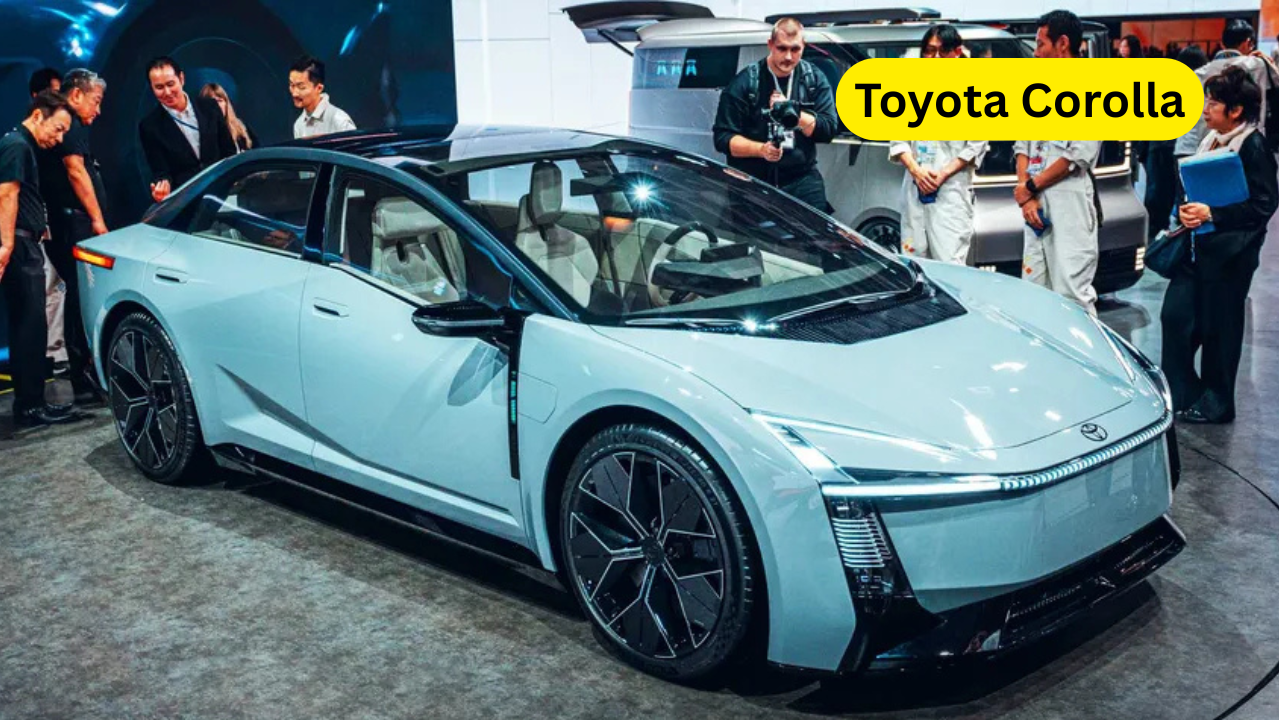2026 Polestar 3 Adopts 800-Volt Architecture: The premium electric SUV market is evolving rapidly, and Polestar is stepping up its game in a major way. The Swedish performance EV brand has confirmed that its flagship model, the 2026 Polestar 3, will adopt a cutting-edge 800-volt electrical architecture, bringing it in line with other high-end electric SUVs and cementing its position as a serious competitor in the luxury EV segment. This major hardware overhaul is designed to significantly improve charging speeds, enhance powertrain efficiency, and future-proof the SUV for the next generation of electric mobility.
Polestar’s decision comes shortly after sister brand Volvo announced that its upcoming 2026 EX90 would adopt 800-volt technology, following the same path as the Volvo ES90 electric luxury sedan. Initially, there was speculation that Polestar might lag behind its sibling brands, but the company has now made it clear that its flagship SUV will receive the same next-level upgrades. Built on the SPA2 platform shared with the EX90 and ES90, the Polestar 3 is more than just a facelift — it’s a comprehensive evolution of the model that aims to redefine what a premium electric SUV can offer.
The shift to 800V is more than a technical detail — it’s a strategic upgrade. It allows the Polestar 3 to charge faster, run more efficiently, and deliver higher performance without compromising battery longevity. With additional enhancements like a new rear motor, advanced suspension tuning, improved computing power, and support for upgraded battery packs, the 2026 Polestar 3 is positioning itself as one of the most technologically advanced electric SUVs on the road.
800-Volt Electrical Architecture: A Major Leap Forward
Ultra-Fast Charging Capabilities
The most significant change in the 2026 Polestar 3 is the introduction of the 800-volt electrical architecture, which boosts DC fast charging speeds to a peak of 350kW — up from the previous 250kW limit. This means that the SUV can now charge from 10% to 80% in just 22 minutes, roughly 25% faster than before. The higher voltage reduces current flow, minimizing heat generation and allowing the battery to charge more efficiently and at higher power levels.
Improved Efficiency and New Battery Options
Polestar claims the new architecture boosts battery efficiency by up to 6% (WLTP cycle). The system also enables the integration of new-generation CATL lithium-ion batteries. Depending on the configuration, the Polestar 3 will be available with either a 92kWh battery (rear-motor version) or a 106kWh pack (Dual Motor and Performance variants), offering an estimated WLTP range of 593–635 km.
Powertrain and Performance Enhancements
New Rear Motor and Increased Output
One of the key performance upgrades is a new permanent magnet synchronous rear motor, which significantly enhances power delivery. In the Performance trim, this motor works with the front unit to deliver an impressive 500kW (670 hp) of combined output. The setup offers improved torque distribution and responsiveness, while revised anti-roll bars and a steering recalibration further enhance the SUV’s handling dynamics.
Driving Dynamics and Chassis Upgrades
The Performance variant will come with active air suspension as standard, while it will be optional on the Dual Motor version. The 800V platform also enables more precise control over energy flow, allowing the Polestar 3 to deliver improved stability and performance at higher speeds. Together with the new suspension and powertrain tuning, these upgrades make the 2026 Polestar 3 one of the most engaging electric SUVs in its class.
Advanced Computing: Nvidia Drive AGX Orin Integration
The 2026 Polestar 3 will feature the Nvidia Drive AGX Orin chip, a major leap from the previous Xavier unit. Even though Polestar will use a single Orin chip (compared to the dual setup in the Volvo EX90), it still boosts computing performance from 30 TOPS (trillion operations per second) to 254 TOPS — an eightfold increase.
This substantial boost will improve:
- Advanced Driver Assistance Systems (ADAS)
- Battery management and energy optimization
- Sensor data processing
- Autonomous driving capabilities (future-ready)
Notably, existing Polestar 3 owners will be able to retrofit this new computing unit for free from 2026, ensuring the brand’s commitment to continuous improvement and customer satisfaction.
Variants and Trim Levels
The 2026 Polestar 3 will be offered in three trims:
- Rear Motor – 92kWh battery, rear-wheel drive
- Dual Motor – 106kWh battery, AWD, optional air suspension
- Performance – 106kWh battery, AWD, 500kW output, standard air suspension
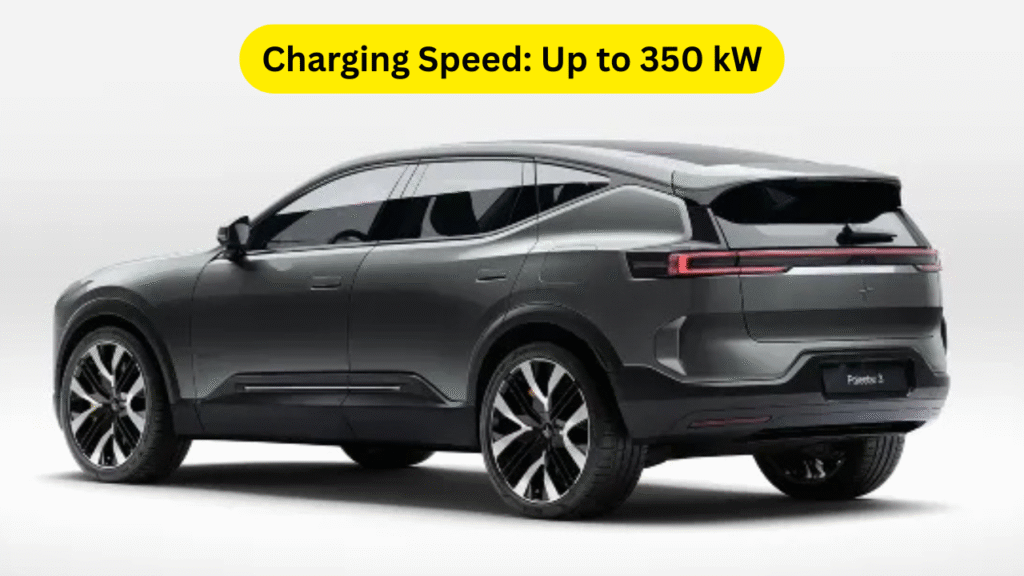
Specifications 2026 Polestar 3
| Feature | Rear Motor | Dual Motor | Performance |
|---|---|---|---|
| Battery Capacity | 92 kWh | 106 kWh | 106 kWh |
| Power Output | TBA | TBA | 500 kW (670 hp) |
| Architecture | 800V | 800V | 800V |
| Charging Speed | Up to 350 kW | Up to 350 kW | Up to 350 kW |
| Charging Time (10-80%) | ~22 mins | ~22 mins | ~22 mins |
| Range (WLTP) | Up to 593 km | Up to 620 km | Up to 635 km |
| Platform | SPA2 | SPA2 | SPA2 |
| Computing Power | 254 TOPS | 254 TOPS | 254 TOPS |
| Suspension | Optional Air | Optional Air | Standard Air |
| Drive Layout | RWD | AWD | AWD |
Launch Timeline and Market Availability
Polestar has confirmed that the 2026 Polestar 3 will launch first in the UK, where demand for the outgoing model has exceeded expectations. Other European and global markets will follow shortly after, though exact dates are yet to be announced. Pricing details are also still under wraps but are expected to be slightly higher than the outgoing model due to the significant hardware upgrades.
Other Details and Future Outlook
The adoption of 800-volt architecture is part of Polestar’s broader strategy to compete directly with rivals like Porsche Taycan, Audi Q8 e-tron, and BMW iX M60. With faster charging, longer range, more powerful performance, and vastly improved onboard computing, the Polestar 3 is now positioned as one of the most advanced luxury electric SUVs on the market. This upgrade also reinforces Polestar’s commitment to innovation and premium performance, ensuring that its flagship SUV remains competitive for years to come.
Also read: Citroen C5 Aircross 2025 Review: A Comfort-Focused, Quirky and Family-Friendly SUV
Conclusion
The 2026 Polestar 3 is far more than just an upgraded model — it represents a significant leap forward in EV technology and capability. By adopting 800-volt electrical architecture, Polestar has addressed one of the most critical factors in EV ownership: charging speed. The result is a vehicle that can go further, charge faster, and deliver a more engaging driving experience.
Beyond just charging improvements, the Polestar 3 benefits from a powerful new motor, enhanced chassis tuning, cutting-edge computing capabilities, and a more efficient battery system. Together, these upgrades create a package that is both technologically advanced and emotionally engaging — a hallmark of what premium electric mobility should be.
As Polestar continues to expand its global presence and refine its product lineup, the Polestar 3 is set to become a cornerstone of the brand’s identity and a benchmark for the segment. It is proof that electric SUVs can deliver both luxury and performance without compromise.
In an increasingly competitive EV market, Polestar’s decision to push the boundaries with its flagship SUV demonstrates a clear ambition: to stand shoulder to shoulder with the world’s best — and possibly even surpass them.
FAQs of 2026 Polestar 3 Adopts 800-Volt Architecture
1. What is the biggest update in the 2026 Polestar 3?
The most significant change is the introduction of 800-volt electrical architecture, which enables much faster charging (up to 350kW), improved battery efficiency, and support for advanced powertrains and components.
2. How fast can the 2026 Polestar 3 charge?
Thanks to the 800V system, the Polestar 3 can charge from 10% to 80% in around 22 minutes, which is about 25% faster than the previous model’s charging capability.
3. What is the range of the new Polestar 3?
Depending on the variant, the 2026 Polestar 3 offers a WLTP range of between 593 km and 635 km, thanks to its upgraded 92kWh and 106kWh battery packs.
4. What are the key performance upgrades in the new model?
The new rear motor, producing up to 500kW combined output in the Performance variant, improved steering calibration, and updated anti-roll bars significantly enhance handling and power delivery.
5. When will the 2026 Polestar 3 go on sale?
The new Polestar 3 will launch first in the UK due to high demand, with other markets following later. Pre-orders are expected to open in 2025, and deliveries will begin in 2026.
